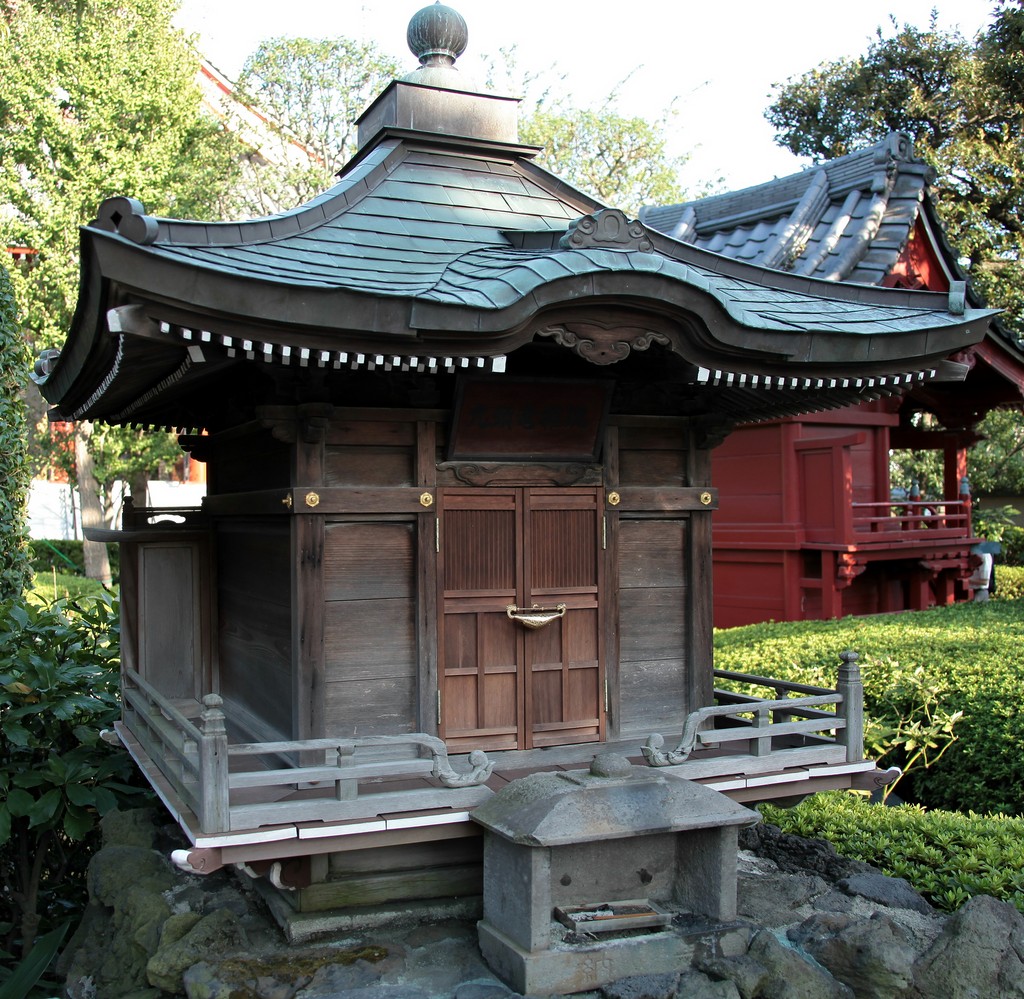HOKORA SENSOJI TEMPLE
Un hokora ou hokura (祠 or 神庫) est un sanctuaire shinto miniature dédié à un kami populaire, situé dans l'enceinte d'un plus grand sanctuaire ou sur un côté de la route, consacrant un kami ne se trouvant pas sous la juridiction d'un grand sanctuaire. Un dōsojin, kami mineur protégeant les voyageurs des esprits mauvais, peut être hébergé dans un hokora.
Le mot hokora, dont on pense qu'il est un des premiers mots en japonais pour désigner les sanctuaire shinto, est issu de hokura (神庫), signifiant littéralement "reposoir de kami", ce qui semble indiquer que les premiers sanctuaires étaient des huttes destinées à recueillir quelque yorishiro.
-----------------------------------------------
A hokora or hokura (祠 or 神庫) is a miniature Shinto shrine either found on the precincts of a larger shrine and dedicated to folk kami, or on a street side, enshrining kami not under the jurisdiction of any large shrine. Dōsojin, minor kami protecting travelers from evil spirits, can for example be enshrined in a hokora.
The term hokora, believed to have been one of the first Japanese words for Shinto shrine, evolved from hokura (神庫), literally meaning "kami repository", a fact that seems to indicate that the first shrines were huts built to house some yorishiro.
The word yorishiro (依り代) literally means approach substitute. Yorishiro were tools conceived to attract the kami and give them a physical space to occupy, thus making them accessible to human beings.
Le mot hokora, dont on pense qu'il est un des premiers mots en japonais pour désigner les sanctuaire shinto, est issu de hokura (神庫), signifiant littéralement "reposoir de kami", ce qui semble indiquer que les premiers sanctuaires étaient des huttes destinées à recueillir quelque yorishiro.
-----------------------------------------------
A hokora or hokura (祠 or 神庫) is a miniature Shinto shrine either found on the precincts of a larger shrine and dedicated to folk kami, or on a street side, enshrining kami not under the jurisdiction of any large shrine. Dōsojin, minor kami protecting travelers from evil spirits, can for example be enshrined in a hokora.
The term hokora, believed to have been one of the first Japanese words for Shinto shrine, evolved from hokura (神庫), literally meaning "kami repository", a fact that seems to indicate that the first shrines were huts built to house some yorishiro.
The word yorishiro (依り代) literally means approach substitute. Yorishiro were tools conceived to attract the kami and give them a physical space to occupy, thus making them accessible to human beings.
